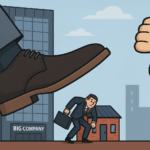|
Getting your Trinity Audio player ready...
|
The workplace of 2025 is in flux, shaped by rapid technological advancements, evolving employee expectations, and the lingering effects of a global shift toward hybrid work. According to Gallup’s research, organizations that fail to adapt to these changes risk disengagement, attrition, and declining productivity.
Leadership is no longer just about setting targets; it’s about fostering trust, nurturing well-being, and creating an environment where employees feel valued and heard. The difference between a thriving organization and a struggling one often comes down to one critical factor: effective leadership strategies that align with the human element of work.
HR professionals and executives must rethink traditional approaches to leadership style and employee management. Gallup’s findings reveal that employees today crave clarity, growth opportunities, and meaningful connections with their managers more than ever before. A rigid, top-down leadership model is giving way to a coaching-based approach, where leaders act as enablers rather than enforcers.
This article draws on Gallup’s latest workplace insights to provide actionable guidance for leaders and HR teams navigating the complexities of 2025, from boosting engagement to leveraging AI without losing the human touch.
Key Workplace Challenges in 2025 (Based on Gallup Research)

Employee Engagement & Well-being
Employee engagement is at a crossroads. Gallup’s 2025 workplace report highlights a troubling trend: only 32% of employees feel engaged at work, a decline from post-pandemic highs. Disengagement isn’t just a morale issue—it’s a productivity killer, costing companies billions in lost revenue.
One major culprit of this is burnout. Employees are increasingly overwhelmed by unrealistic workloads, blurred work-life boundaries, and a lack of mental health support. A Gallup study found that 76% of workers experience burnout at least sometimes, with remote employees particularly vulnerable due to the “always-on” work culture.
To combat this, forward-thinking organizations are shifting from reactive wellness programs to proactive, holistic strategies. For example, companies like Microsoft have implemented “Essentials“—company-wide well-being program, including days off to recharge, resulting in measurable improvements in morale and output. Leaders must recognize that engagement isn’t about free snacks or office perks; it’s about fostering psychological safety, offering flexibility, and ensuring employees feel their work matters. As Gallup’s data shows, teams with high engagement see 21% higher profitability, proving that investing in well-being isn’t just ethical—it’s good business.
Hybrid & Remote Work Dynamics

The hybrid work model is here to stay, but it’s far from perfected. Gallup’s research indicates that 53% of employees expect a hybrid arrangement in 2025, yet many organizations still struggle with fairness and cohesion. One major pitfall is the Proximity bias—the tendency for leaders to favour in-office employees over remote ones when it comes to promotions and recognition.
A study cited in a Wall Street Journal article found that remote workers are promoted 31% less frequently than those who work in the office. This difference was observed in an analysis of two million white-collar workers. The study also noted that remote workers receive less mentorship, especially women, creating a two-tier workforce that undermines morale and retention.
Another challenge is maintaining company culture in a fragmented work environment. Without intentional strategies, remote employees can feel isolated, leading to disengagement. Companies like GitLab have tackled this by embedding culture into daily operations—using virtual coffee chats, asynchronous communication norms, and transparent documentation to bridge the gap. Leadership strategies must evolve to ensure inclusivity, whether an employee is at home or in the office. As Gallup’s workplace experts emphasize, the future of work isn’t about location—it’s about connection.
What Employees Need from Leaders
Employees today don’t just want a boss—they want a leader who inspires trust and fosters growth. Gallup’s research reveals that only 22% of employees strongly agree that their leaders have a clear direction for their organization. This lack of clarity breeds uncertainty, disengagement, and attrition.
Workers crave transparency—not just in company goals, but in how their individual contributions matter. A study by Edelman found that 81% of employees consider trust in their leaders to be a deal-breaker when deciding to stay with a company or take a new job. This highlights the crucial role of trust in the employee-employer relationship. The Grossman Group also emphasizes the importance of authenticity, empathy, and humanity in building trust with employees. Leaders who communicate openly, admit mistakes, and involve teams in decision-making build loyalty that no paycheck can buy.
Beyond trust, employees demand development opportunities. Gallup found that 87% of millennials rate professional growth as a top priority, yet many organizations still promote based on tenure rather than potential. Forward-thinking companies have tackled this with “Career Sprint” programs—short-term, high-impact projects that let employees test new roles without long-term commitments.
Recognition is equally critical. A simple “thank you” can boost morale, but personalized, strengths-based feedback is what truly drives performance. As Gallup’s data shows, employees who receive regular recognition are five times more likely to feel connected to their company’s culture.
The 5 Key Behaviours of Effective Leaders (Gallup Findings)
- Building Trust: Trust isn’t earned through titles but through consistency. Employees need to know their leaders will follow through on promises. A Harvard Business Review study found that high-trust companies report 50% higher productivity than low-trust ones. Leaders who admit failures, share credit, and listen without judgment create psychological safety—a key driver of innovation.
- Creating a Culture of Accountability – Accountability isn’t about punishment; it’s about ownership. Gallup’s research shows that teams with clear expectations are 2.5x more likely to be engaged. Leaders must define success metrics early, provide regular check-ins, and empower employees to solve problems independently. Netflix’s “Freedom & Responsibility” culture exemplifies this—employees get autonomy but are held to high standards.
- Encouraging Collaboration: Hybrid work has made silos worse. Leaders must actively break down barriers by fostering cross-functional projects and using digital tools like Slack or Microsoft Teams to keep remote workers included. A Stanford study found that collaborative teams solve problems 50% faster than isolated ones.
- Focusing on Strengths: Gallup’s decades of research prove that employees who use their strengths daily are six times more engaged. Yet, most managers focus on fixing weaknesses. Leaders should help employees identify and leverage their natural talents, whether through strengths assessments or tailored role adjustments.
- Prioritizing Employee Well-being: Burnout is a leadership failure. Companies like Salesforce have set the standard by offering “Wellbeing Subsidies” ($100/month for wellness expenses) and enforcing meeting-free Fridays. Gallup data confirms that employees who feel cared for are 69% less likely to search for a new job.
The Role of HR in Shaping Leadership
HR can’t just be policy enforcers—they must be leadership architects. Gallup’s 2025 HR insights highlight that only 10% of managers are naturally equipped to lead effectively, meaning structured development is non-negotiable. HR should:
– Implement data-driven leadership programs (e.g., using 360-degree feedback to identify gaps).
– Create internal mentorship networks to prepare high-potential employees for leadership.
– Advocate for flexible leadership models, like rotating leadership roles in projects to test emerging talent.
A case in point: Unilever’s “Future Leaders Programme“ combines AI-driven analytics with personalized coaching, resulting in a 40% faster leadership pipeline. HR must also ensure leaders reflect the workforce’s diversity. McKinsey reports that ethnically diverse leadership teams are 36% more profitable, yet Gallup finds only 28% of HR leaders prioritize inclusive leadership training.
Practical Strategies for Leaders & HR Professionals
Improving Employee Engagement
Annual surveys are outdated. Real-time pulse checks (like weekly 3-question polls) help leaders address issues before they escalate. For example, Cisco’s “Conscious Culture” platform uses AI to analyze employee sentiment daily, allowing managers to adjust strategies dynamically.
Flexibility is another lever—Gallup finds that employees with customizable schedules are 43% less likely to experience burnout. Consider “output-based” work models (like Spotify’s “Work From Anywhere” policy) instead of rigid 9-to-5 structures.
Recognition must be frequent and meaningful. A Boston University study found that employees who receive weekly recognition are far less likely to quit. Simple tactics like public shout-outs in team meetings or personalized e-cards (Adobe’s “Kudos” system) cost little but yield high returns.
Enhancing Manager Effectiveness
Managers need coaching skills, not just technical expertise. Gallup’s “State of the American Manager” report shows that 70% of team engagement hinges on the manager. Training should focus on:
- Active listening (e.g., repeating back concerns to confirm understanding).
- Emotional intelligence (EQ) – Deloitte’s leadership program increased EQ scores by 18% in six months through role-playing exercises.
- Delegation – Avoid micromanagement by using frameworks like RACI (Responsible, Accountable, Consulted, Informed) to clarify roles.
Tools matter too. Microsoft’s “Viva Insights” helps managers spot at-risk employees by analyzing work patterns (e.g., late-night emails signalling burnout).
Future-Proofing the Workforce
AI won’t replace leaders, but leaders who use AI will replace those who don’t. Upskilling is urgent:
- Microlearning (5-10 minute daily lessons via apps like Udemy) improves retention by 80% (Deloitte).
- Job rotation programs (like Amazon’s “Career Choice”) prepare employees for lateral moves when roles evolve.
Mentorship bridges generational gaps. IBM’s “Reverse Mentoring” program pairs junior employees with execs to share tech/diversity insights, boosting retention by 25%. Finally, align leadership with purpose. A Bailey and French study found that workers would accept an on average 20% pay cut to work in a purpose-driven organisation.
Final Thoughts & Call to Action
The challenges of 2025—remote work dynamics, AI integration, declining engagement—won’t solve themselves. They require intentional leadership strategies grounded in empathy and evidence.
For leaders, start small. Pick one area (recognition, flexibility, or trust-building) and measure its impact over 90 days. In addition to this, lead by example—if you want innovation, show vulnerability. If you want collaboration, break down silos first.
For HR teams, use data, not guesswork—leverage pulse surveys and AI analytics to identify disengagement risks early. Rethink leadership development—replace outdated training with continuous, personalized coaching.
The gap between good and great leadership isn’t resources—it’s commitment to putting people first. The question isn’t whether you’ll adapt to 2025’s workplace demands, but how fast.
Now is the time to act. Revisit your leadership framework today—before attrition and disengagement force you to.







